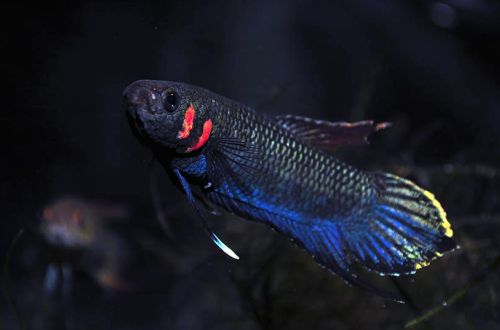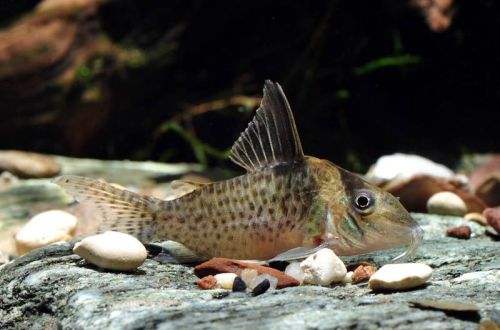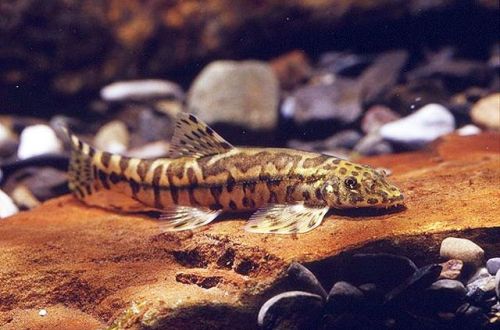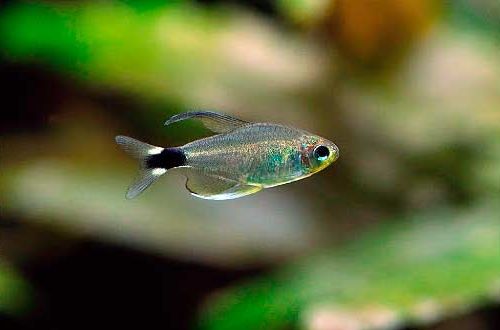
Fursh’s cockerel
Försch’s Betta or Försch’s Cockerel, scientific name Betta foerschi, belongs to the Osphronemidae family. Named after Dr. Walter Försch, who first collected and scientifically described this species. Refers to fighting fish, the males of which arrange fights with each other. Due to the peculiarities of behavior and conditions of detention, it is not recommended for beginner aquarists.

Contents
Habitat
Comes from Southeast Asia. Endemic to the Indonesian island of Borneo (Kalimantan). Inhabits swampy reservoirs located among the tropical rainforest, and small streams and rivers associated with them. Fish live in constant twilight. The surface of the water is poorly lit by the sun due to the dense crowns of trees, and the water has a dark color due to the abundance of dissolved organic substances resulting from the decomposition of fallen leaves, snags, grass and other vegetation.
Brief information:
- The volume of the aquarium – from 50 liters.
- Temperature – 22-28°C
- Value pH — 4.0–6.0
- Water hardness – 1–5 dGH
- Substrate type – any dark
- Lighting – subdued
- Brackish water – no
- Water movement – little or no
- The size of the fish is 4-5 cm.
- Food – preferred food for labyrinth fish
- Temperament – conditionally peaceful
- Content – males singly or in pairs male / female
Description
Adults reach 4–5 cm. The fish have a slender, flexible body. Males, in contrast to females, look brighter and develop more extended unpaired fins. The coloration is dark blue. Depending on the lighting, greenish tints may appear. On the head on the gill cover there are two orange-red stripes. Females are not so expressive with their light monochromatic coloration.
Food
Omnivorous species, accepts most popular feeds. It is recommended to make a varied diet, including dry, live or frozen foods. A good choice would be special food designed for fighting fish.
Maintenance and care, arrangement of the aquarium
The optimal size of the aquarium for one or two fish starts from 50 liters. Features of keeping Betta Fursh depends on how close they are to their wild relatives. If a fish has lived in an artificial environment for several previous generations, then it requires much less attention than one recently caught from the swamps in Borneo. Fortunately, the latter are rarely found in the European part of the world and already acclimatized specimens are on sale. Nevertheless, they also need quite specific living conditions in a rather narrow range of temperatures and values of the hydrochemical parameters of water.
It is advisable to set the lighting level to a subdued level, or to shade the aquarium with dense clusters of floating plants. The main elements of the decor are a dark substrate and numerous driftwood. A natural part of the design will be the leaves of some trees, placed at the bottom. In the process of decomposition, they will give the water characteristic of natural reservoirs a brown tint and contribute to the establishment of the necessary composition of water, saturated with tannins.
The stability of the habitat in a closed ecosystem depends entirely on the smooth operation of the installed equipment, primarily the filtration system, and the regularity and completeness of the obligatory maintenance procedures for the aquarium.
Behavior and Compatibility
Males are belligerent towards each other and, when they meet, they will certainly go into battle. This rarely leads to injuries, but a weaker individual will be forced to retreat and in the future will avoid meeting, hiding in thickets of plants or in other shelters. In small aquariums, the joint maintenance of two or more males is not allowed; they can only get along in large tanks. There are no problems with females. Compatible with other non-aggressive fish of comparable size that can live in similar conditions.
Breeding / breeding
Betta Fursha are an example of caring parents in the world of fish. During spawning, the male and female perform a “hug dance” during which several dozen eggs are released and fertilized. Then the male takes the eggs into his mouth, where they will be throughout the entire incubation period – 8-14 days. Such a breeding strategy allows you to reliably protect the masonry. With the advent of fry, parents lose interest in them, but at the same time they will not try to eat them, which cannot be said about other fish in the aquarium.
Fish diseases
The cause of most diseases is unsuitable conditions of detention. A stable habitat will be the key to successful keeping. In the event of symptoms of the disease, first of all, the quality of the water should be checked and, if deviations are found, measures should be taken to correct the situation. If symptoms persist or even worsen, medical treatment will be required. Read more about symptoms and treatments in the Aquarium Fish Diseases section.





